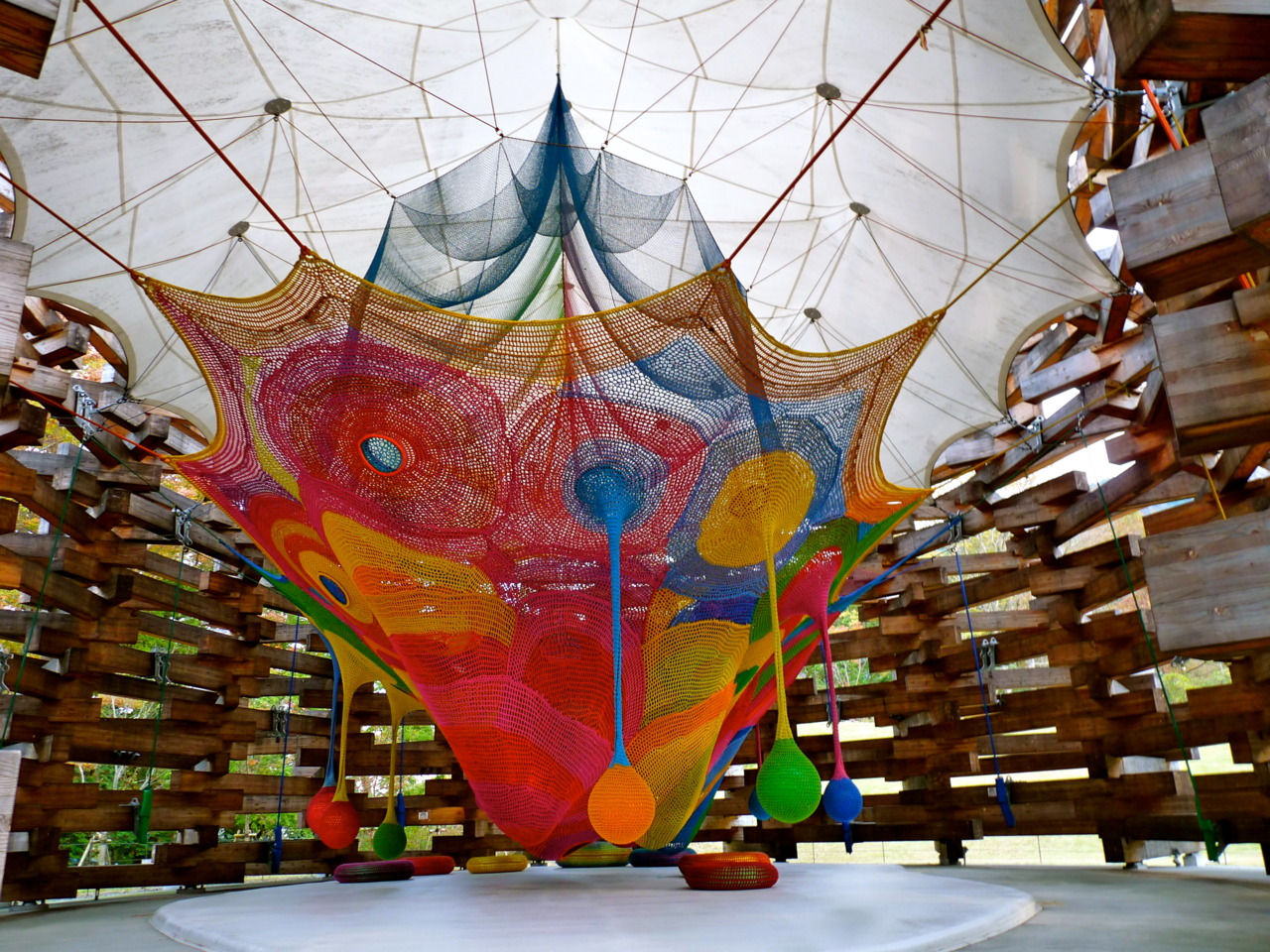Have you ever walked into an art gallery and, under the gaze of a severe-looking museum employee, hurriedly scrutinised the nearest painting? Do you quietly wonder what all the fuss is about Warhol and his soup cans, before reminding yourself that ‘he’s famous, so he must be good’?
After (quite accidentally) happening upon Toshiko MacAdam’s ‘Wonder Space II’ in a recent trip to Japan, I’ve realised that this reverential guilt we feel towards art really isn’t worth the fuss. If anything, it’s detrimental to our appreciation of it, as well as our sense of, well, wonder.
MacAdam’s ‘Wonder Space II’ certainly lives up to its name- from afar the work is concealed by an impressive timber structure resembling a bird’s nest, however upon entry the space suggests one of the many hidden rooms in Wonka’s factory, an assault of colour and texture that leaves you scrambling to remove your shoes and bounce (literally, bounce- the floor consists largely of a springy, flexible material) towards the hand-knitted structure. There’s a sign out the front that insists ‘this work is for children ages 12 and under’, and yet as we enter the space there are already several adults twelve only at heart hanging, climbing and bouncing from the structure. As my boyfriend is quick to point out, art is sometimes about breaking the rules and within moments we follow their lead, squeezing our way upward through holes in the knitted material until we reach its technicolour, trampoline-like roof.
When was the last time I had as much fun as I did in MacAdam’s creation? Surely not since I was a child. Which begs the question, why on earth did we ever stop playing? And in what bizarre universe must art be confined to the off-white walls and condescending silence of museums and galleries? Perhaps it’s time we all take a leaf from MacAdam’s book and stop letting imposing galleries and strict museum attendants dictate the way we view, and interact with, art.










